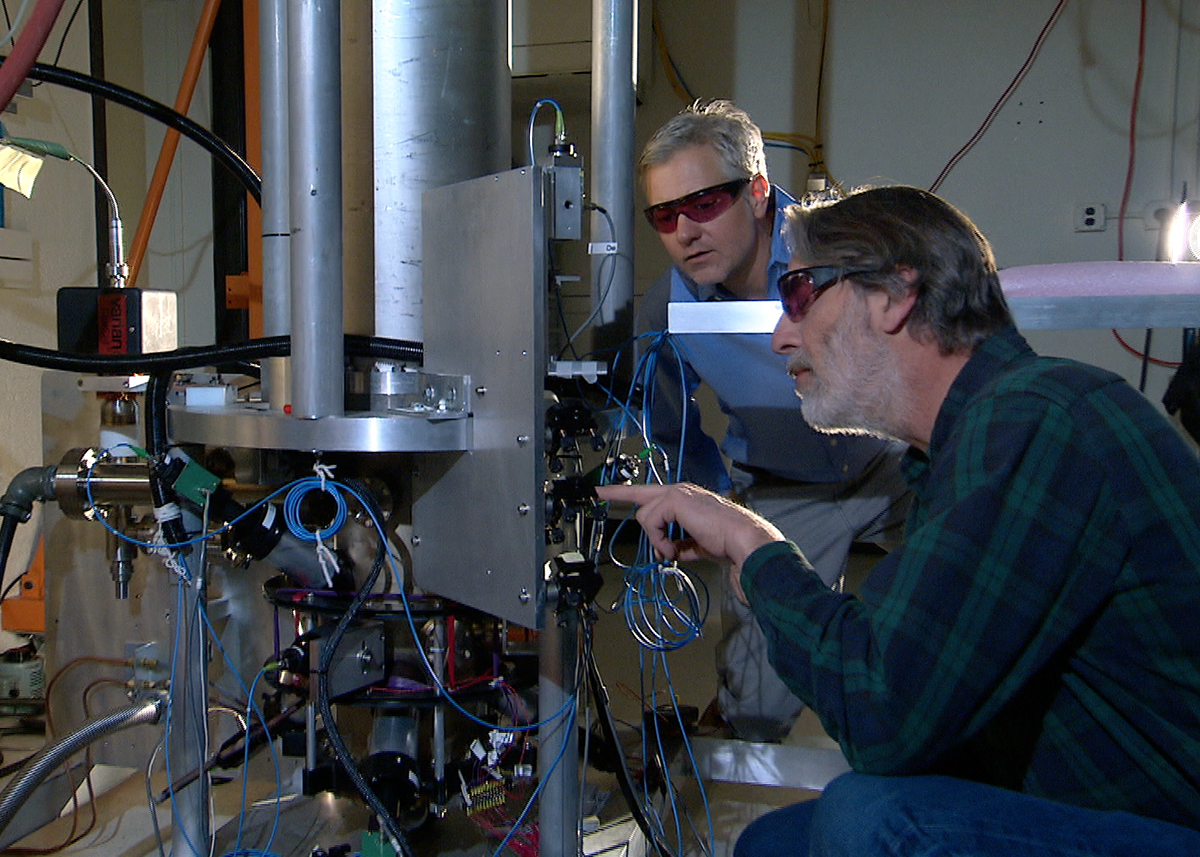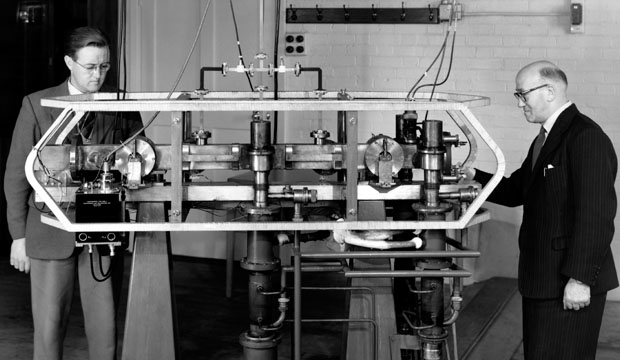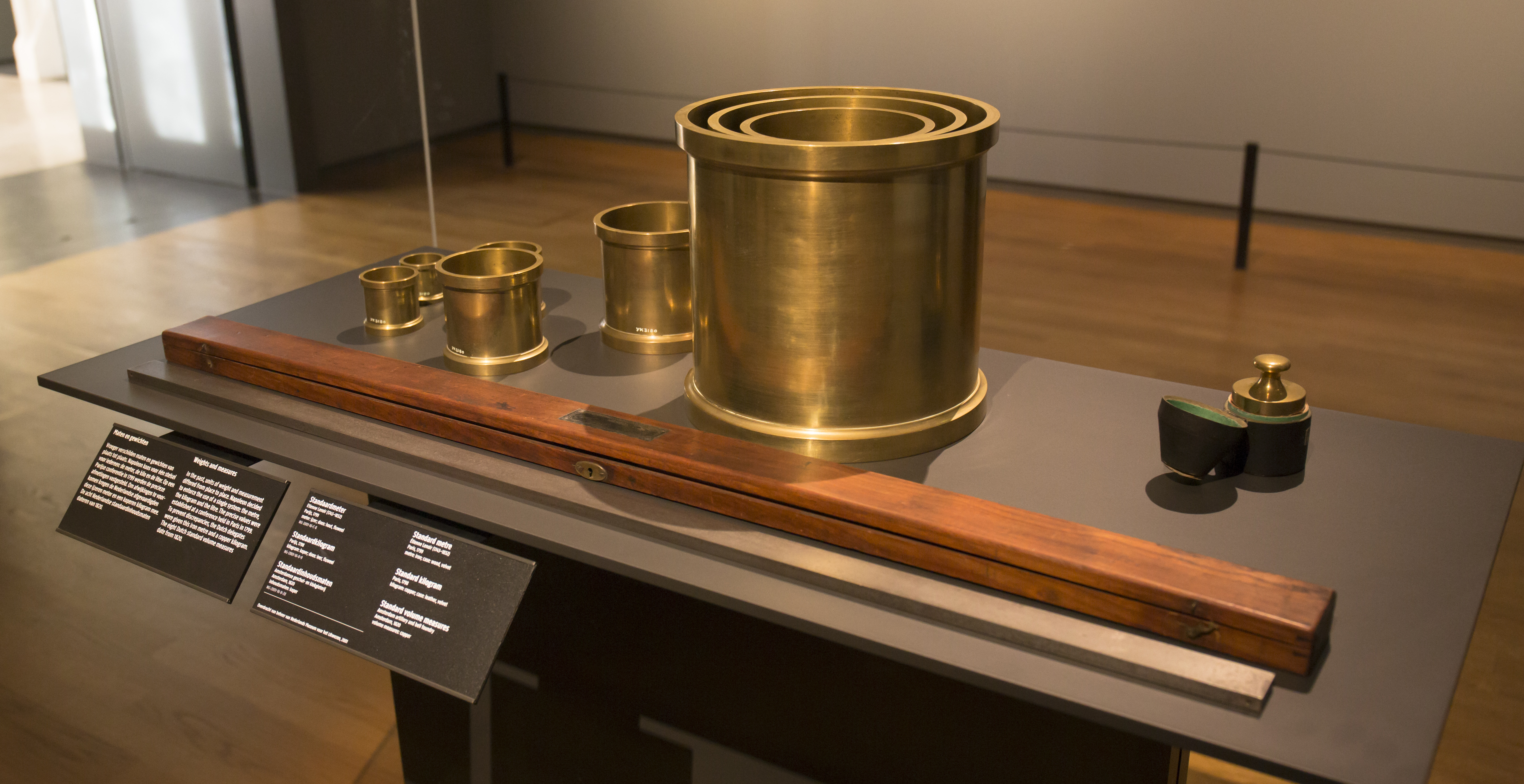|
International Atomic Time
International Atomic Time (abbreviated TAI, from its French name ) is a high-precision atomic coordinate time standard based on the notional passage of proper time on Earth's geoid. TAI is a weighted average of the time kept by over 450 atomic clocks in over 80 national laboratories worldwide. It is a continuous scale of time, without leap seconds, and it is the principal realisation of Terrestrial Time (with a fixed offset of epoch). It is the basis for Coordinated Universal Time (UTC), which is used for civil timekeeping all over the Earth's surface and which has leap seconds. UTC deviates from TAI by a number of whole seconds. , immediately after the most recent leap second was put into effect, UTC has been exactly 37 seconds behind TAI. The 37 seconds result from the initial difference of 10 seconds at the start of 1972, plus 27 leap seconds in UTC since 1972. In 2022, the General Conference on Weights and Measures decided to abandon the leap second by or before 2035, at ... [...More Info...] [...Related Items...] OR: [Wikipedia] [Google] [Baidu] |
Atomic Clock
An atomic clock is a clock that measures time by monitoring the resonant frequency of atoms. It is based on atoms having different energy levels. Electron states in an atom are associated with different energy levels, and in transitions between such states they interact with a very specific frequency of electromagnetic radiation. This phenomenon serves as the basis for the International System of Units' (SI) definition of a second: The second, symbol s, is the SI unit of time. It is defined by taking the fixed numerical value of the caesium frequency, \Delta \nu_\text, the unperturbed ground-state hyperfine transition frequency of the caesium-133 atom, to be when expressed in the unit Hz, which is equal to s−1. This definition is the basis for the system of International Atomic Time (TAI), which is maintained by an ensemble of atomic clocks around the world. The system of Coordinated Universal Time, Coordinated Universal Time (UTC) that is the basis of civil time implements ... [...More Info...] [...Related Items...] OR: [Wikipedia] [Google] [Baidu] |
Caesium Clock
The caesium standard is a primary frequency standard in which the photon absorption by transitions between the two hyperfine ground states of caesium-133 atoms is used to control the output frequency. The first caesium clock was built by Louis Essen in 1955 at the National Physical Laboratory in the UK and promoted worldwide by Gernot M. R. Winkler of the United States Naval Observatory. Caesium atomic clocks are one of the most accurate time and frequency standards, and serve as the primary standard for the definition of the second in the International System of Units (SI), the modern metric system. By definition, radiation produced by the transition between the two hyperfine ground states of caesium-133 (in the absence of external influences such as the Earth's magnetic field) has a frequency, , of exactly . That value was chosen so that the caesium second equaled, to the limit of measuring ability in 1960 when it was adopted, the existing standard ephemeris second based ... [...More Info...] [...Related Items...] OR: [Wikipedia] [Google] [Baidu] |
National Physical Laboratory (United Kingdom)
The National Physical Laboratory (NPL) is the national measurement standards laboratory of the United Kingdom. It sets and maintains physical standards for British industry. Founded in 1900, the NPL is one of the oldest metrology institutes in the world. Research and development work at the laboratory has contributed to the advancement of many disciplines of science, including the development of early computers in the late 1940s and 1950s, construction of the first accurate atomic clock in 1955, and the invention and first implementation of packet switching in the 1960s, which is today one of the fundamental technologies of the Internet. The former heads of NPL include many individuals who were pillars of the British scientific establishment. NPL is based at Bushy Park in Teddington, southwest London. It is operated by NPL Management Ltd, a company owned by the Department for Science, Innovation and Technology, and is one of the most extensive government laboratories in the ... [...More Info...] [...Related Items...] OR: [Wikipedia] [Google] [Baidu] |
Quartz Clock
Quartz clocks and quartz watches are timepieces that use an electronic oscillator regulated by a quartz crystal to keep time. The crystal oscillator, controlled by the resonant mechanical vibrations of the quartz crystal, creates a signal with very precise frequency, so that quartz clocks and watches are at least an order of magnitude more accurate than mechanical clocks. Generally, some form of digital logic counts the cycles of this signal and provides a numerical time display, usually in units of hours, minutes, and seconds. As the advent of solid-state digital electronics in the 1980s allowed them to be made more compact and inexpensive, quartz timekeepers became the world's most widely used timekeeping technology, used in most clocks and watches as well as computers and other appliances that keep time. Explanation Chemically, quartz is a specific form of a compound called silicon dioxide. Many materials can be formed into plates that will resonate. However, quart ... [...More Info...] [...Related Items...] OR: [Wikipedia] [Google] [Baidu] |
Canonical Form
In mathematics and computer science, a canonical, normal, or standard form of a mathematical object is a standard way of presenting that object as a mathematical expression. Often, it is one which provides the simplest representation of an object and allows it to be identified in a unique way. The distinction between "canonical" and "normal" forms varies from subfield to subfield. In most fields, a canonical form specifies a ''unique'' representation for every object, while a normal form simply specifies its form, without the requirement of uniqueness. The canonical form of a positive integer in decimal representation is a finite sequence of digits that does not begin with zero. More generally, for a class of objects on which an equivalence relation is defined, a canonical form consists in the choice of a specific object in each class. For example: *Jordan normal form is a canonical form for matrix similarity. *The row echelon form is a canonical form, when one considers as equ ... [...More Info...] [...Related Items...] OR: [Wikipedia] [Google] [Baidu] |
National Physical Laboratory, UK
The National Physical Laboratory (NPL) is the national measurement standards laboratory of the United Kingdom. It sets and maintains physical standards for British industry. Founded in 1900, the NPL is one of the oldest metrology institutes in the world. Research and development work at the laboratory has contributed to the advancement of many disciplines of science, including the development of early computers in the late 1940s and 1950s, construction of the first accurate atomic clock in 1955, and the invention and first implementation of packet switching in the 1960s, which is today one of the fundamental technologies of the Internet. The former heads of NPL include many individuals who were pillars of the British scientific establishment. NPL is based at Bushy Park in Teddington, southwest London. It is operated by NPL Management Ltd, a company owned by the Department for Science, Innovation and Technology, and is one of the most extensive government laboratories in the ... [...More Info...] [...Related Items...] OR: [Wikipedia] [Google] [Baidu] |
Timecode
A timecode (alternatively, time code) is a sequence of numeric codes generated at regular intervals by a timing synchronization system. Timecode is used in video production, show control and other applications which require temporal coordination or logging of recording or actions. Video and film In video production and filmmaking, SMPTE timecode is used extensively for synchronization, and for logging and identifying material in recorded media. During filmmaking or video production shoot, the camera assistant will typically log the start and end timecodes of shots, and the data generated will be sent on to the editorial department for use in referencing those shots. This shot-logging process was traditionally done by hand using pen and paper, but is now typically done using shot-logging software running on a laptop computer that is connected to the timecode generator or the camera itself. The SMPTE family of timecodes are almost universally used in film, video and audio pr ... [...More Info...] [...Related Items...] OR: [Wikipedia] [Google] [Baidu] |
Real-time Data
Real-time data (RTD) is information that is delivered immediately after collection. There is no delay in the timeliness of the information provided. Real-time data is often used for navigation or tracking. Such data is usually data processing, processed using real-time computing although it can also be stored for later or off-line data analysis. Real-time data is not the same as dynamic data. Real-time data can be dynamic (e.g. a variable indicating current location) or static (e.g. a fresh log entry indicating location at a specific time). In economics Real-time economic data, and other official statistics, are often based on preliminary estimates, and therefore are frequently adjusted as better estimates become available. These later adjusted data are called "Official statistics#Data revision, revised data". The terms real-time economic data and real-time economic analysis were coined by Francis X. Diebold and Glenn D. Rudebusch. Macroeconomics, Macroeconomist Glenn D. Rudebusch ... [...More Info...] [...Related Items...] OR: [Wikipedia] [Google] [Baidu] |
Order Of Magnitude
In a ratio scale based on powers of ten, the order of magnitude is a measure of the nearness of two figures. Two numbers are "within an order of magnitude" of each other if their ratio is between 1/10 and 10. In other words, the two numbers are within about a factor of 10 of each other. For example, 1 and 1.02 are within an order of magnitude. So are 1 and 2, 1 and 9, or 1 and 0.2. However, 1 and 15 are not within an order of magnitude, since their ratio is 15/1 = 15 > 10. The reciprocal ratio, 1/15, is less than 0.1, so the same result is obtained. Differences in order of magnitude can be measured on a base-10 logarithmic scale in " decades" (i.e., factors of ten). For example, there is one order of magnitude between 2 and 20, and two orders of magnitude between 2 and 200. Each division or multiplication by 10 is called an order of magnitude. This phrasing helps quickly express the difference in scale between 2 and 2,000,000: they differ by 6 orders of magnitude. Examples o ... [...More Info...] [...Related Items...] OR: [Wikipedia] [Google] [Baidu] |
Signal Averaging
Signal averaging is a signal processing technique applied in the time domain, intended to increase the strength of a signal relative to noise that is obscuring it. By averaging a set of replicate measurements, the signal-to-noise ratio (SNR) will be increased, ideally in proportion to the square root of the number of measurements. Deriving the SNR for averaged signals Assumed that * Signal s(t) is uncorrelated to noise, and noise z(t) is uncorrelated : E (t)z(t-\tau)= 0 = E (t)s(t-\tau)forall t,\tau. * Signal power P_=E ^2/math> is constant in the replicate measurements. * Noise is random, with a mean of zero and constant variance in the replicate measurements: E = 0 = \mu and 0 < E left(z-\mu\right)^2= E ^2= P_ = \sigma^2. * We (canonically) define Signal-to-Noise ratio as |
International Bureau Of Weights And Measures
The International Bureau of Weights and Measures (, BIPM) is an List of intergovernmental organizations, intergovernmental organisation, through which its 64 member-states act on measurement standards in areas including chemistry, ionising radiation, physical metrology, as well as the International System of Units (SI) and Coordinated Universal Time (UTC). It is headquartered in the Pavillon de Breteuil in Saint-Cloud, near Paris, France. The organisation has been referred to as IBWM (from its name in English) in older literature. Function The BIPM has the mandate to provide the basis for a single, coherent system of measurements throughout the world, traceable to the International System of Units, International System of Units (SI). This task takes many forms, from direct dissemination of units to coordination through international comparisons of national measurement standards (as in electricity and ionising radiation). Following consultation, a draft version of the BIPM Work ... [...More Info...] [...Related Items...] OR: [Wikipedia] [Google] [Baidu] |
Two-way Satellite Time And Frequency Transfer
Two-way satellite time and frequency transfer (TWSTFT) is a high-precision long distance time and frequency transfer mechanism between time bureaux to determine and distribute time and frequency standards. TWSTFT is being evaluated as an alternative to be used by the Bureau International des Poids et Mesures in the determination of International Atomic Time International Atomic Time (abbreviated TAI, from its French name ) is a high-precision atomic coordinate time standard based on the notional passage of proper time on Earth's geoid. TAI is a weighted average of the time kept by over 450 atomi ... (TAI), as a complement to the current standard method of simultaneous observations of GPS transmissions. External links TWSTFT page at the National Physical LaboratoryTWSTFT page at the US Naval Observatory Time Telecommunications techniques Synchronization {{time-stub ... [...More Info...] [...Related Items...] OR: [Wikipedia] [Google] [Baidu] |





